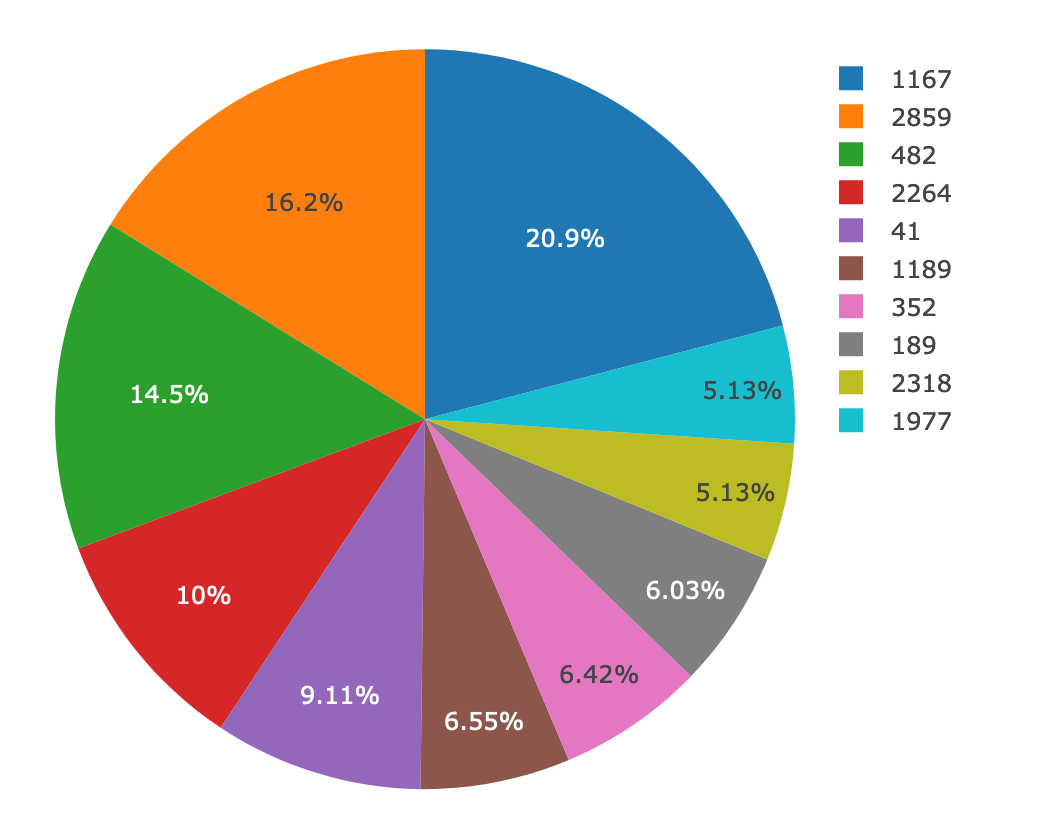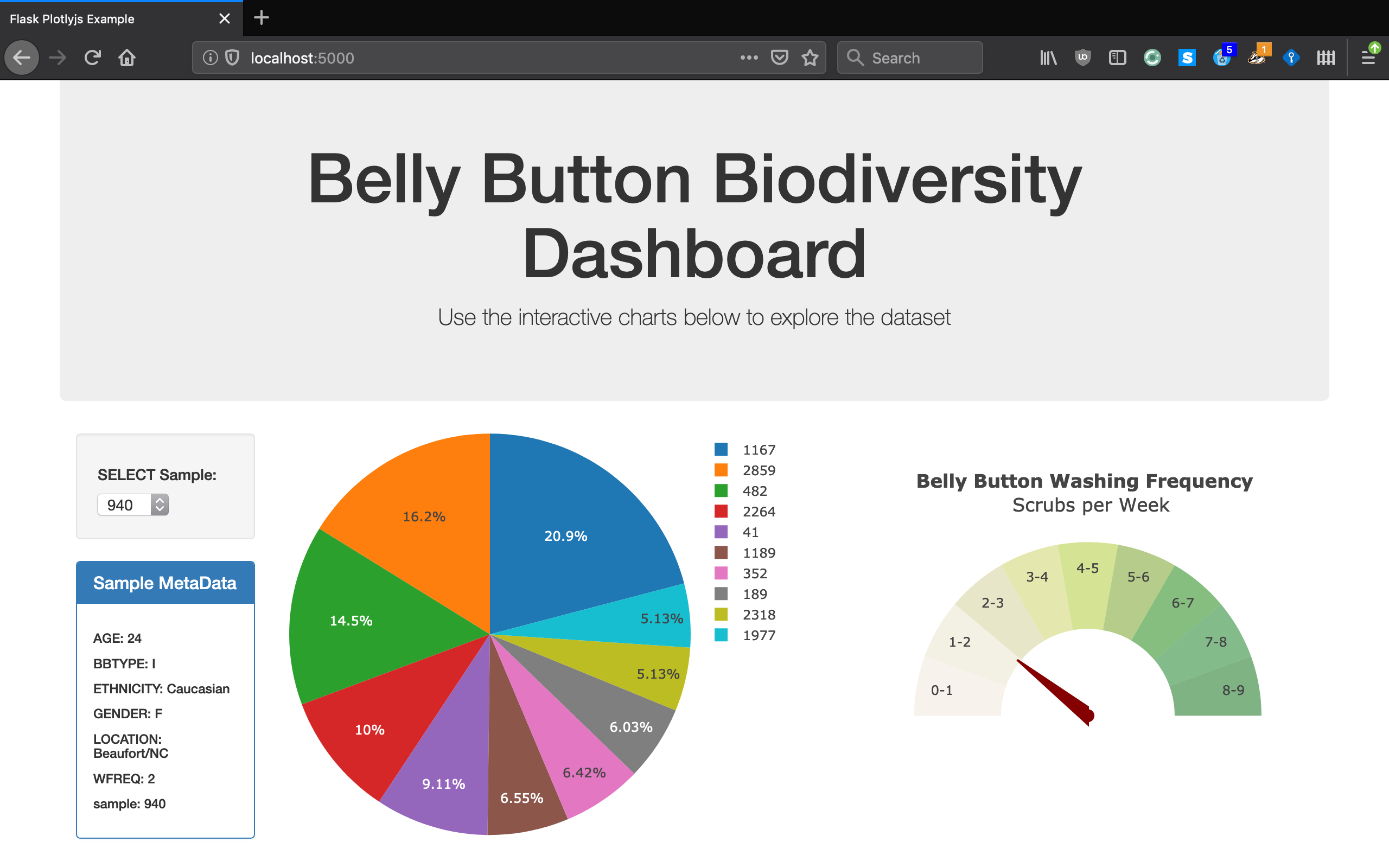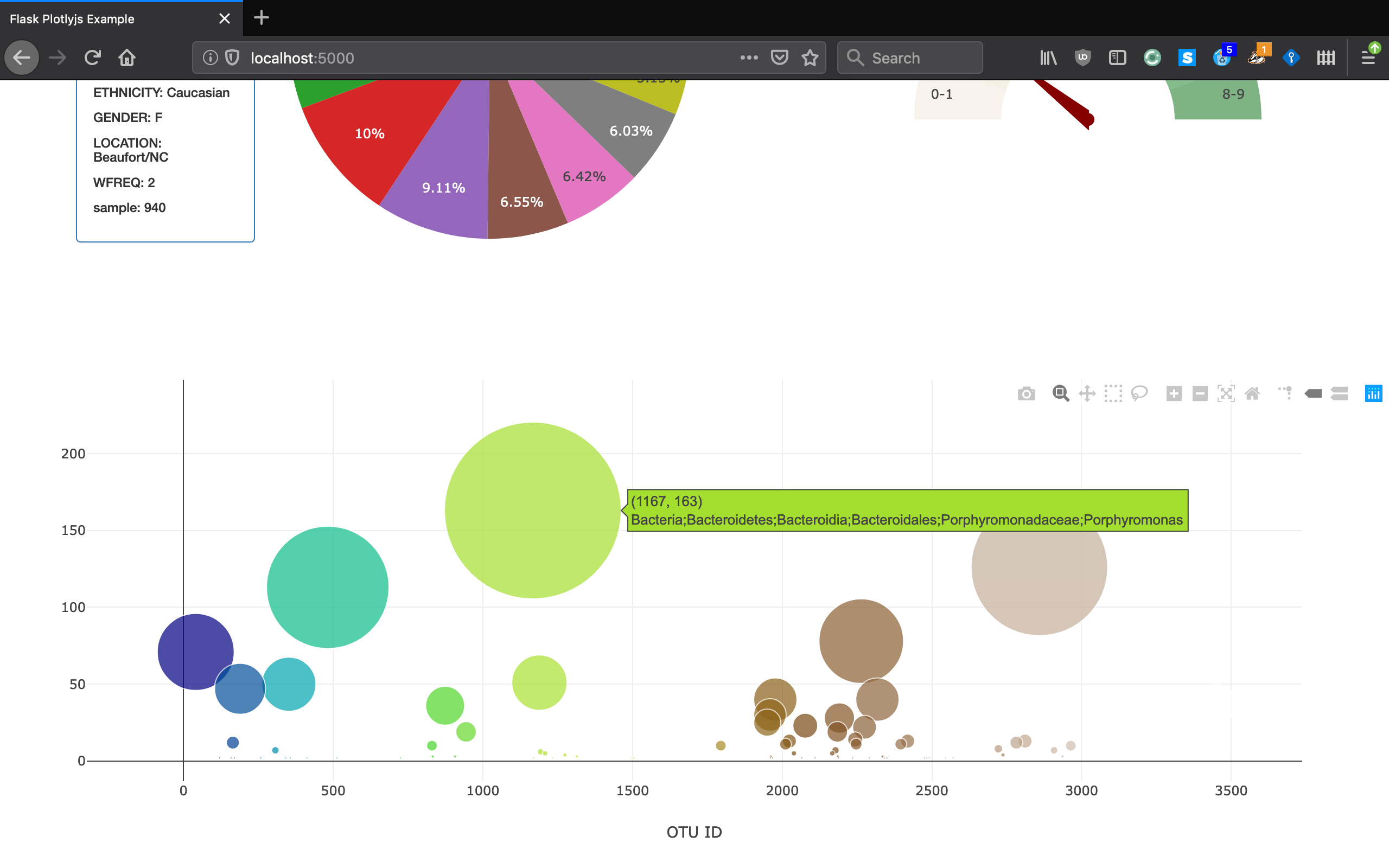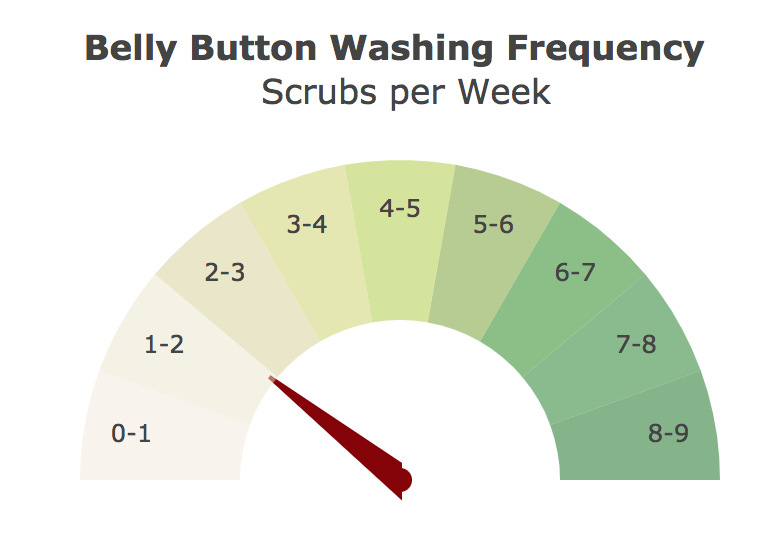In this assignment, you will build an interactive dashboard to explore the Belly Button Biodiversity DataSet.
Use Plotly.js to build interactive charts for your dashboard.
-
Create a PIE chart that uses data from your samples route (
/samples/<sample>) to display the top 10 samples.-
Use
sample_valuesas the values for the PIE chart -
Use
otu_idsas the labels for the pie chart -
Use
otu_labelsas the hovertext for the chart
-
-
Create a Bubble Chart that uses data from your samples route (
/samples/<sample>) to display each sample.-
Use
otu_idsfor the x values -
Use
sample_valuesfor the y values -
Use
sample_valuesfor the marker size -
Use
otu_idsfor the marker colors -
Use
otu_labelsfor the text values
-
-
Display the sample metadata from the route
/metadata/<sample>- Display each key/value pair from the metadata JSON object somewhere on the page
-
Update all of the plots any time that a new sample is selected.
-
You are welcome to create any layout that you would like for your dashboard. An example dashboard page might look something like the following.
Deploy your Flask app to Heroku.
-
You can use the provided sqlite file for the database.
-
Ask your Instructor and TAs for help!
The following task is completely optional and is very advanced.
-
Adapt the Gauge Chart from https://plot.ly/javascript/gauge-charts/ to plot the Weekly Washing Frequency obtained from the route
/wfreq/<sample> -
You will need to modify the example gauge code to account for values ranging from 0 - 9.
-
Update the chart whenever a new sample is selected
Use Flask API starter code to serve the data needed for your plots.
- Test your routes by visiting each one in the browser.
-
Don't forget to
pip install -r requirements.txtbefore you start your server. -
Use
console.loginside of your JavaScript code to see what your data looks like at each step. -
Refer to the Plotly.js Documentation when building the plots.
Data Boot Camp © 2018. All Rights Reserved. "# Belly_Button_Diversity"





